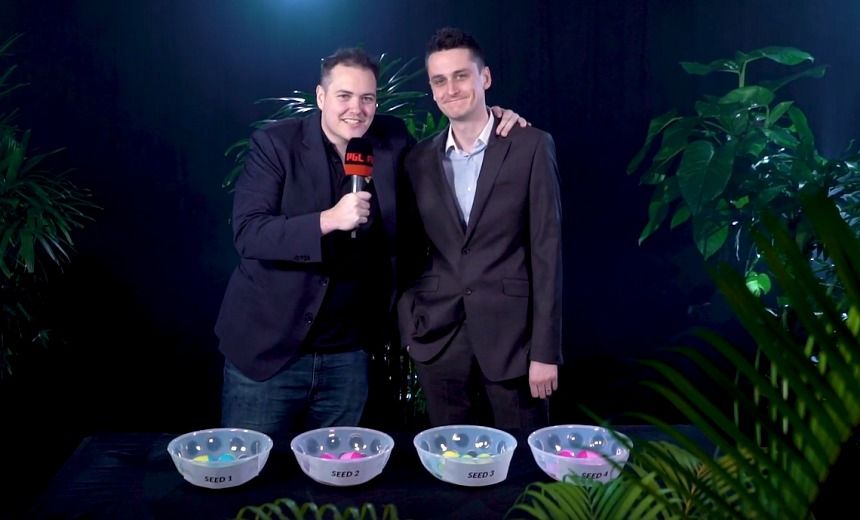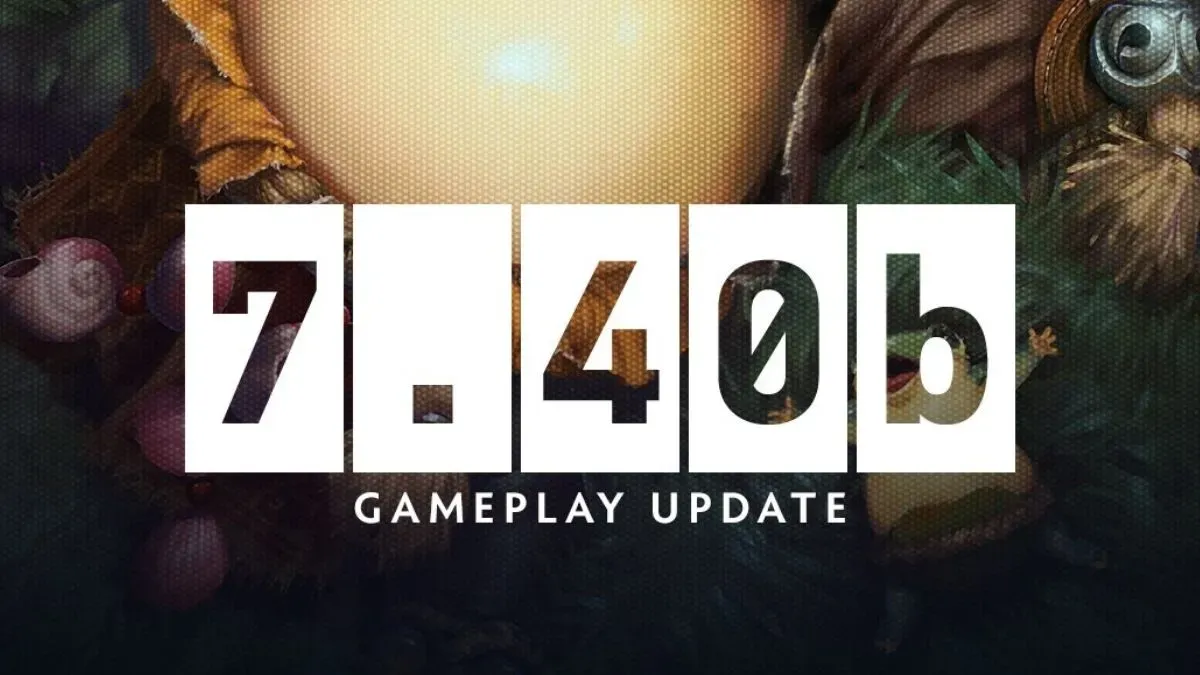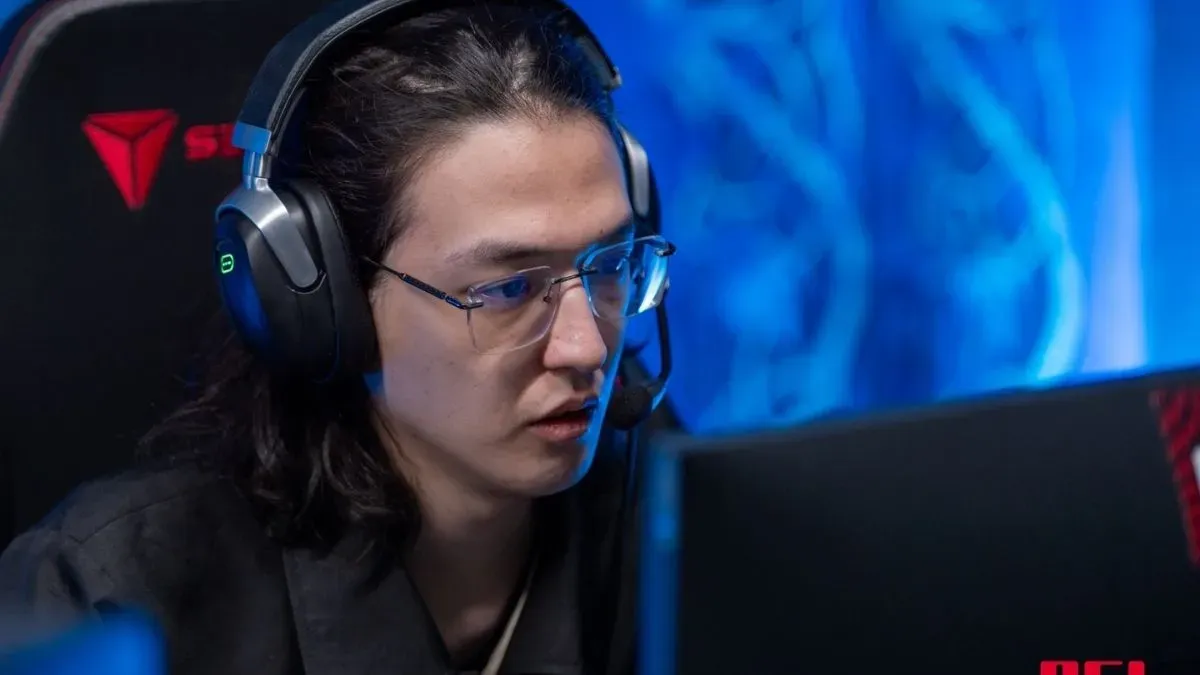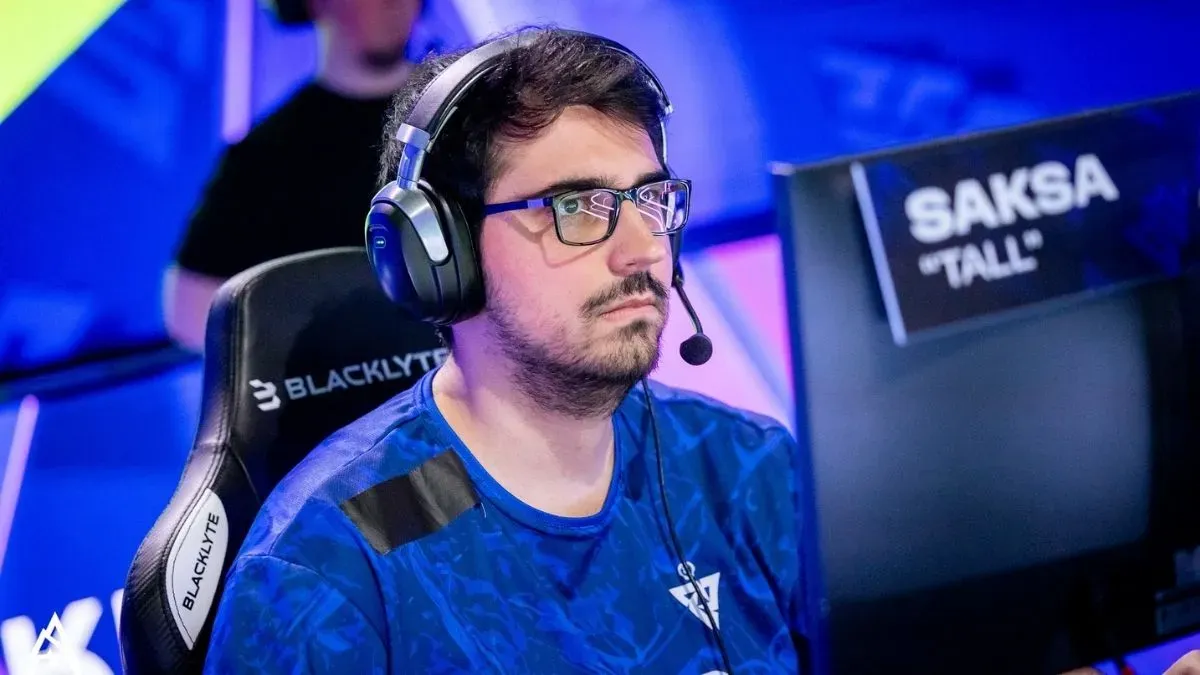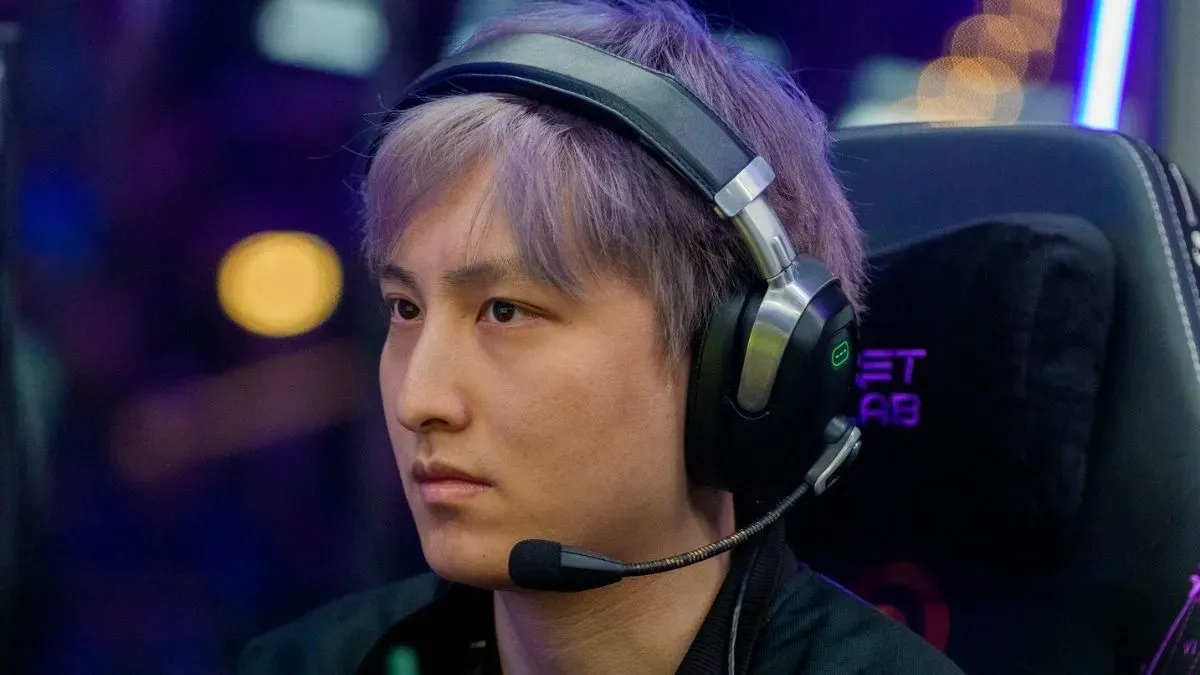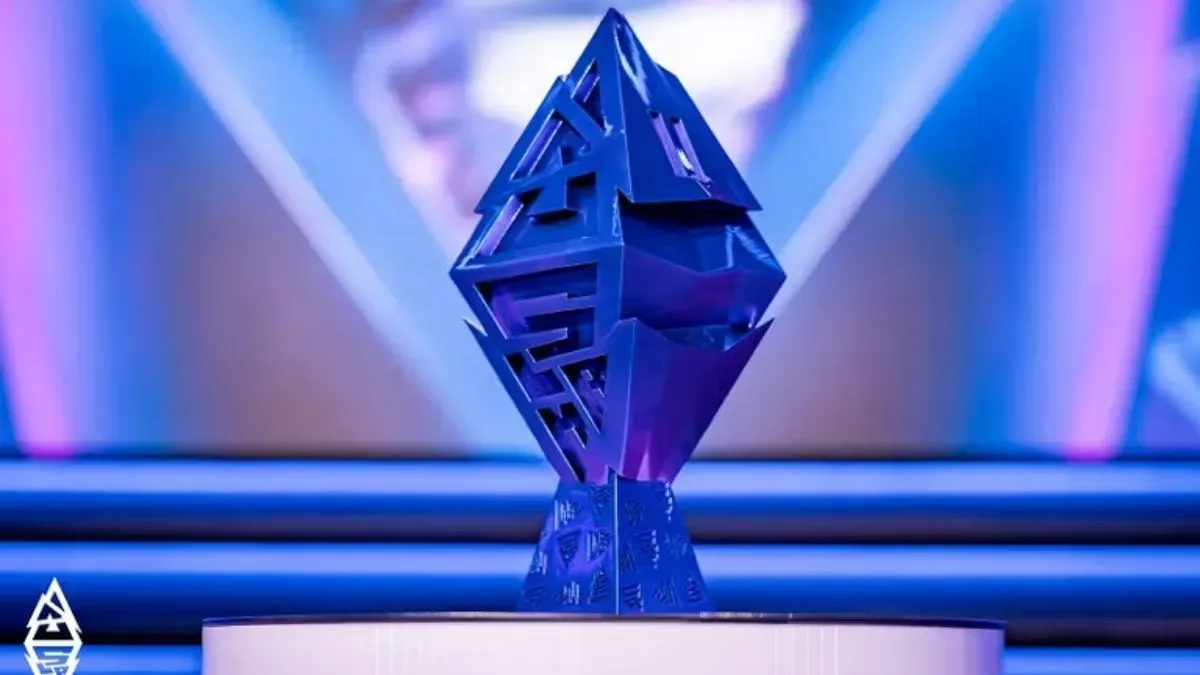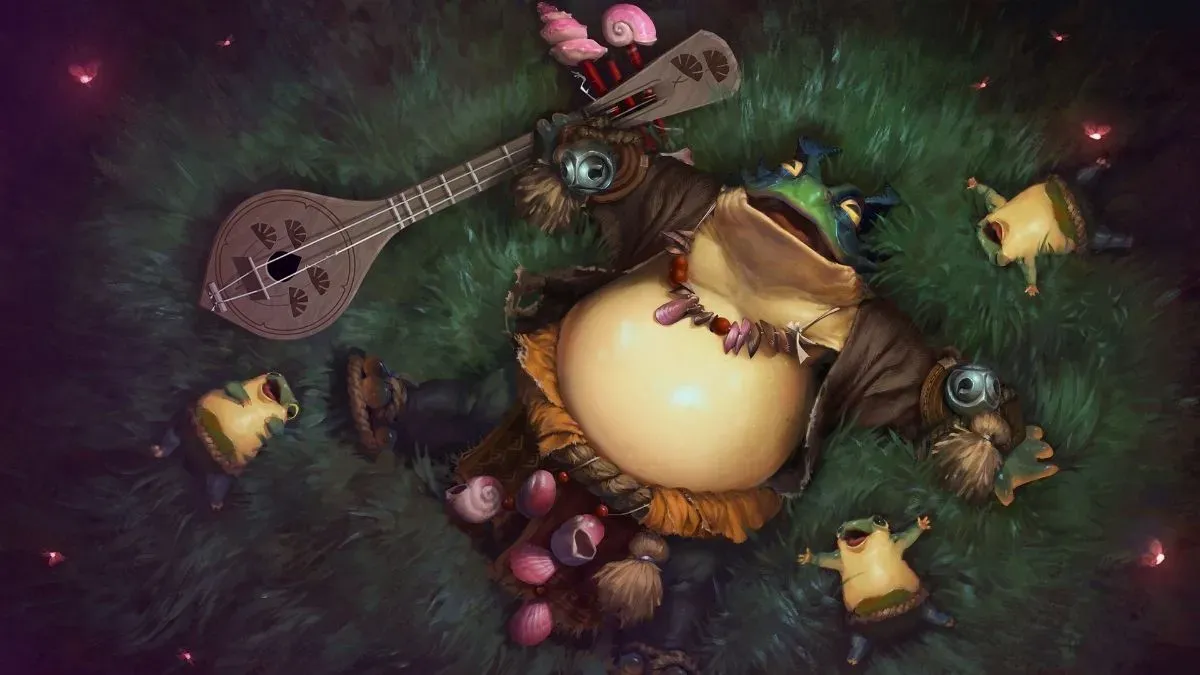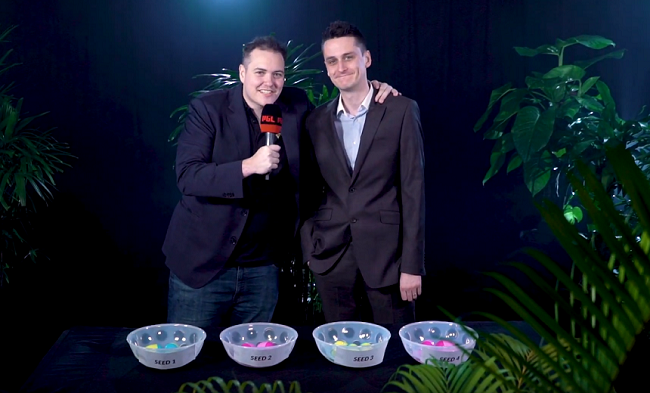
SirActionSlacks and Malystryx prepare to draw the groups for the Kuala Lumpur Major
First, the easy part: the playoffs will be a double-elimination bracket with best-of-threes leading into a best-of-five Grand Finals. Double-elimination is widely agreed to be superior to single-elimination, and it’s certainly how our Majors should be done.
The first round of the lower bracket will be best-of-one. This is the only time a single game will be an entire series in the tournament. It’s not ideal, especially for elimination, and it means that a team who struggled through their group stage could lose five games in a row, versus only three other teams, and be eliminated from the Major.
The group stage is GSL-style, with best-of-threes. This is essentially a mini-double-elimination bracket, but one in which the top two teams will be sent to the upper bracket and the bottom two to the lower bracket.
Now, while the worst-performing teams could lose five games and face three teams, the best-performing team could win thirteen games in a row and play only six of the fifteen other teams at the tournament. That scenario is less likely—a team is more likely than not to drop at least one game across six series.
I don’t love that a team can win the Major and play games versus fewer than half the other teams at the tournament. The reward here is so big—such a huge number of DPC points on the line—that I would feel more comfortable seeing the winning team square off against more teams.
Obviously, the playoff bracket can’t be adjusted just to make a winning team play more series. Really, it’s in the group stage that I’d like to see more teams facing each other. Two groups of eight in a best-of-two round robin-style group stage would at least satisfy my desire to see more match-ups.
The downside of the round robin is that there can be the danger of tie-breakers, as well as an issue with games played later in the group stage being taken less seriously by teams that have already guaranteed (or already lost) their spot in the upper bracket.
I guess this means I’m rooting for a team to take the long lower bracket route to first place. At least that way, they'll have beaten more of the teams at the event in direct match-ups.
What are the groups?
Taking a closer look at the groups in the group stage, the first question I had was how did we end up with these groups?
Well, first, the teams were divided into four seeds by PGL in advance of a drawing. The fourth-place seeds were Tigers, the winner of the Minor, and then the third-place qualifiers for Europe, North America and China. That was mentioned by Lawrence “Malystryx” Phillips in the group drawing video (linked and discussed below).
It’s possible to walk through the logic used for the other three seeds. The top four qualifying teams from the four regions traditionally seen as strongest (China, CIS, Europe and North America) were used for the top seed. Then the first place qualifiers from Southeast Asia and South America were placed in the second seed group along with the second place qualifiers from China and North America. The remaining four teams were placed in the third seed.
Why were China and North America’s second-place qualifiers given second seed placing over the teams from the other four regions? It seems that the results from ESL One Hamburg 2018 were used to determine which teams to place in the second and third seeds. At that tournament, Vici Gaming placed second, and Forward Gaming beat out Ninjas in Pyjamas by coming in 7-8th to the latter’s 9-10th. Vici Gaming and Forward Gaming were both placed in the second seed, while Ninjas in Pyjamas were placed in the third along with Gambit, Pain X, and TNC Predator, who all failed to qualify for ESL One Hamburg.
In the absence of any direct comparisons between teams, I think this is a reasonable way to determine seeding so that a (slightly) random draw for the actual groups can result in groups that are as even as possible.
The seeding also placed an emphasis on separating the qualifiers for each specific region among different seeds. This means that it was plausible for a single group to randomly draw all of a region’s teams; we could have ended up with one group with three Chinese teams and one team from another region. Fortunately, that didn’t happen. You can watch the video below to see the groups being formed:
https://www.youtube.com/watch?v=OgWtaqYqgeQ
The draw itself was done by the comedically-awkward duo of Malystryx and Jake “SirActionSlacks” Kanner. I appreciate the transparency of filming the drawing. Though the seeding of teams may be debated, the drawing itself was done in a fair manner.
My match-ups to watch are paiN Gaming versus Ninjas in Pyjamas, Evil Geniuses versus Team Aster, PSG.LGD versus Tigers, and Virtus.pro versus Alliance. Groups A and B are the biggest question marks for me when trying to pick favorites to make the the upper bracket, though I think the other two groups could easily surprise us.
Groups A and B will play out in a single, long day on November 9 (Malaysia Time), and Groups C and D will be completed on November 10. Let me know in the comments which group’s results you’re most interested in!

